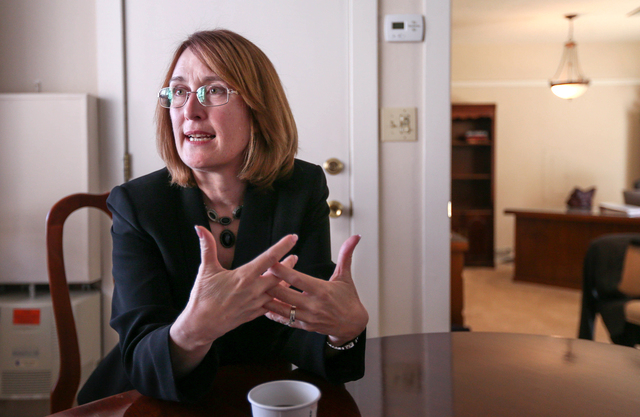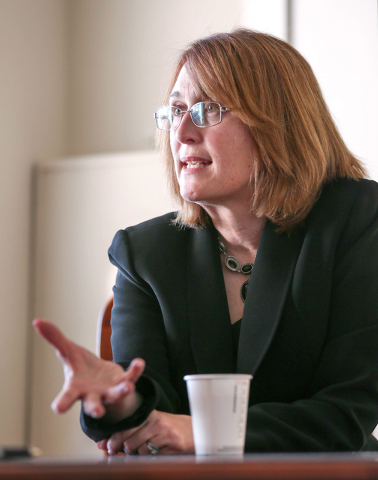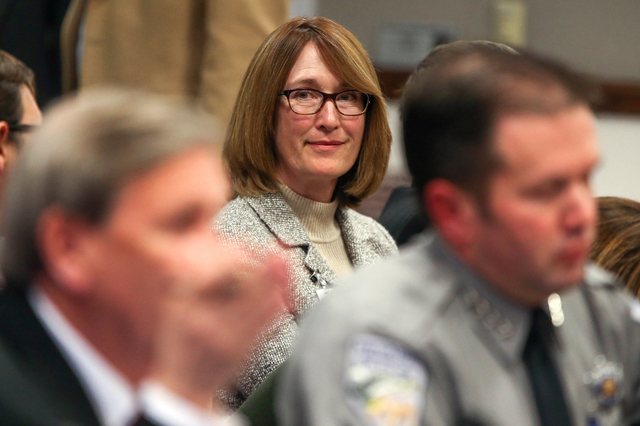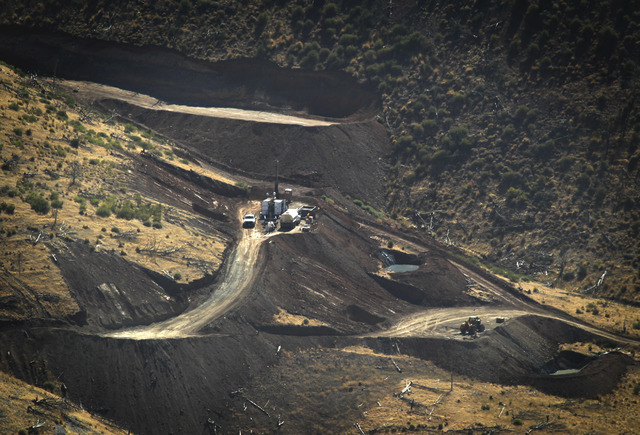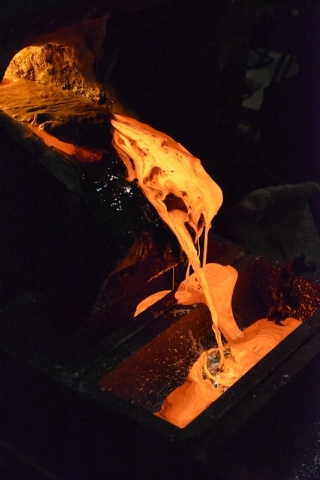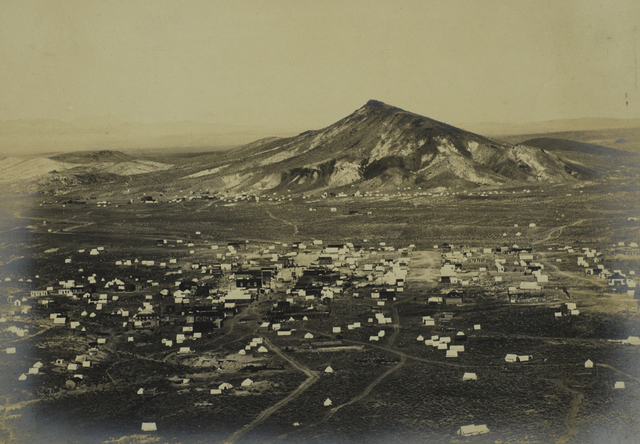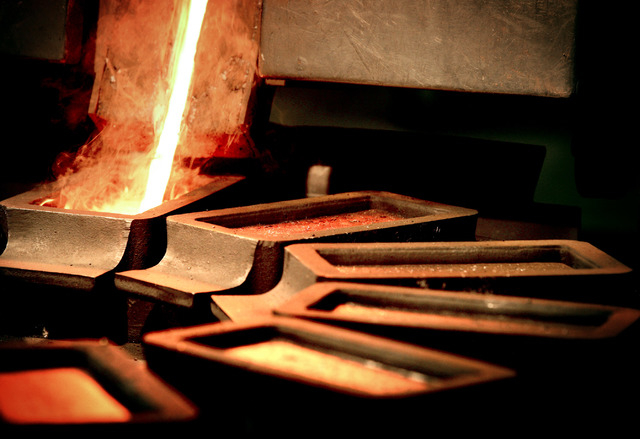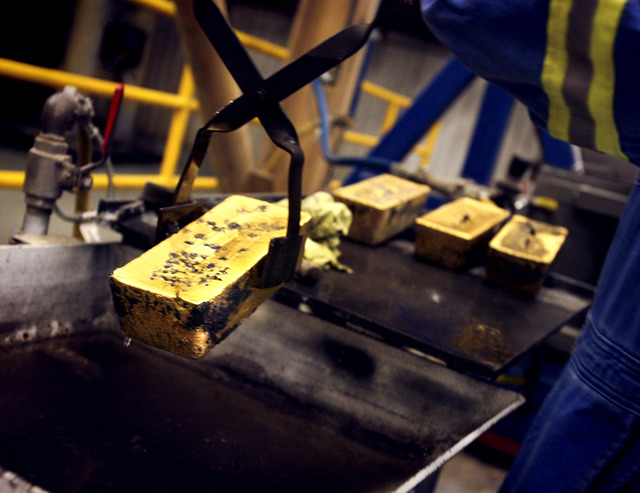Bennett took varied career path to Nevada Mining Association post
CARSON CITY — Dana Bennett’s path to becoming the first woman to lead the Nevada Mining Association is paved with dusty archives mined from the veins of Silver State history.
Bennett, 52, took over in December as president of the organization formed in 1912.
It wasn’t the lure of nuggets or dreams of glitter that led the way.
“History,” she said in a whisper booming with passion.
“Rocks are great. Dirt’s great. We played with all that stuff. But — it’s history.
“You can’t talk about Nevada history without talking about mining,” she said. “It’s just the two are so closely intertwined. This began as a mining state. It’s what attracted people here in the first place.”
CHILDHOOD influences
Bennett grew up in Reno, where her parents moved to when she was a baby. The oldest of three girls, exploring the outdoors was always a big part of their upbringing.
“My folks took us out in the desert. We spent a lot of time on weekends driving around looking at old Nevada ghost towns and old places around the state,” Bennett told the Review-Journal in a recent interview at her Carson City office.
Her father worked downtown at First National Bank, now City Hall. Sometimes they’d lunch at the Mapes, once a grand hotel that hosted movie stars and notables.
Then they’d walk home together. “And he would tell me stories about Reno,” she said.
What followed was a journey through academia, public service and private industry, all woven together with the threads of bygone days.
PROFESSIONAL CAREER
Bennett earned her doctorate in history from Arizona State University in 2011. She obtained a master’s in women’s history from State University of New York at Binghamton, and a bachelor’s in U.S. history from Boise State.
She’s authored four books on the history of Midas and Battle Mountain; more than a dozen historical articles on Nevada politics, mining, communities, cowboys, rodeo and the transformation of the state’s economy; 16 oral histories of notable Nevadans; and a few documentary films.
Not all her jobs were a good fit. Teaching, a profession that runs in the family, was a bust.
“When you get an advanced degree in history the expectation is that you’ll teach,” she said. “I liked the research and analysis part; wasn’t so crazy about the teaching part.
“I feel bad for my students,” she said with a wry grin.
She came to understand modern-day mining as a research analyst for the public lands committee at the Nevada Legislature from the late 1980s through 1998.
“We toured mines, we had presentations from folks involved in mining, and because so much of Nevada is managed by the federal government, mining policy was a big part of what the committee did,” she said. “In that 10-year process, I learned a lot about how the industry relates with government and how it operates on a global scale.”
Bennett also spent time as a senior researcher in Gov. Brian’s Sandoval’s office, then as regional director for the governor’s economic development office. Before that she was director of government affairs for R&R Partners in Las Vegas, often representing the Nevada Mining Association. She also owned her own historical research firms.
GLASS CEILINGS
Like many women, Bennett has experienced those “proving moments,” when the scope of abilities is questioned because of gender.
“I was once told in a job that it’s a good thing I worked out and they liked what I was doing, because if I hadn’t they wouldn’t hire another woman because the woman before me didn’t work out,” Bennett recalled.
Instead of anger, she found humor in the comment.
“It made me laugh,” she said. “To tell me I had the weight of all womanhood on my shoulders and that if I don’t perform then anyone who’s a woman is somehow held back, to me that was ludicrous.”
MINING’S FUTURE
Bennett is excited about the future of mining, a melding of the past with the future as Nevada navigates toward a high-tech economy.
“What I think is really interesting about Nevada mining today is that there are so many minerals,” she said. “We’re so focused on gold and silver and copper. Those are our historical and traditional productions.
“But we produce a lot of other things that are really important to the devices that make our 21st-century life livable and enjoyable,” she said. “Vanadium. It’s showing great promise as an energy storer to be used in certain types of batteries. Lithium is here.”
“So the future Nevada has talked about, developing an advance manufacturing sector, high technology. … All of those things require minerals and metals to work.
“Mining is intrinsically tied with Nevada’s future,” she said.
“I’ve been saying that the mining industry is Nevada’s original and most enduring STEM industry,” Bennett said. “This is a science technology, engineering, math-based industry. We have highly skilled employees that are always looking for a new and better way to do things. And some of those advancements find uses in other industries.”
In the Nevada Legislature, mining — like other industries and business groups — is awaiting details of Sandoval’s business license fee proposal, projected to raise about $250 million a year. The measure would eliminate the current flat-rate $200 annual business license fee and replace it with a graduated rate scale under which companies would pay a minimum of $400 up to $4 million, depending on the type of industry and gross receipts.
For the mining industry, the top rate as initially outlined would be $658,000 for companies with gross receipts of more than $1.1 billion.
Sandoval in his budget also proposed increasing mining’s modified business tax rate, from 1.17 percent to 2 percent, a move that would bring in another $14.6 million over the two-year budget cycle.
Mining is a frequent target when state leaders seek more revenue. In November, voters rejected a constitutional amendment to a cap net proceeds taxes paid by the industry.
“I think voters have been clear then and in previous elections that they understand the importance of mining to this economy and to this state,” Bennett said. “And they also understand that you can’t build tax policy on just one industry.”
Bennett said the industry supports Sandoval’s call for more education funding and reforms.
“There’s no question education deserves more attention,” she said. “On the funding piece of that, historically we have always opposed taxation when it’s targeted directly as us. We have at the same time said there needs to be a broad-based solution.
“Everyone who is participating in this state should be participating in its support.”
Bennett has never gone panning for gold or digging for opals. Those are on her list of many things she wants to do. And she admits she still has a lot to learn to represent Nevada’s mining industry that employs about 15,000 and pays average annual wages of about $87,000.
But Bennett’s eager to bring a fresh face to an old industry.
She’s as comfortable in the urban settings of Las Vegas and Reno as she is in the boonies of Elko County. Bennett and her husband, Shannon Jackson, a Battle Mountain native and third-generation miner who spent 23 years in the industry, spend a lot of time in Midas, where they have family and own property.
“I tell people that there are two great things about this job,” she said. “I get to talk about history and the future at the same time. And I get to be all over Nevada. I get to be in Reno, I get to be in Las Vegas. I get to be in the rurals.
“My turf is the whole state,” Bennett said. “And I like that. I like that a lot.”



